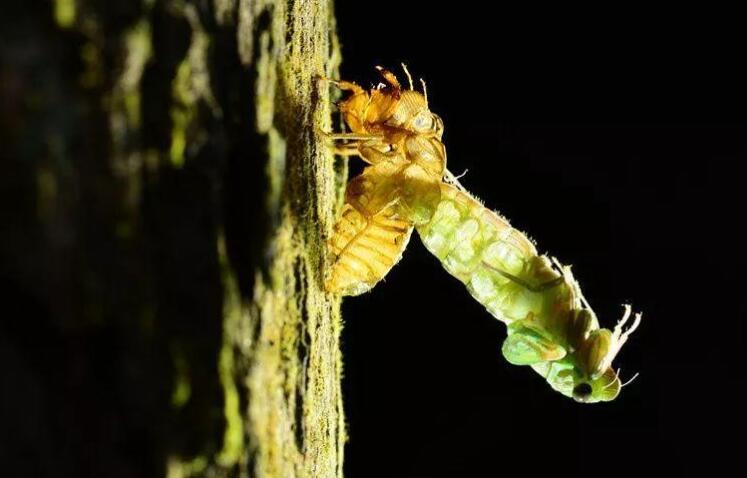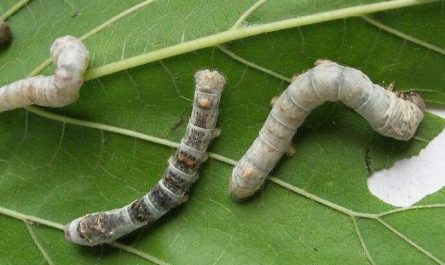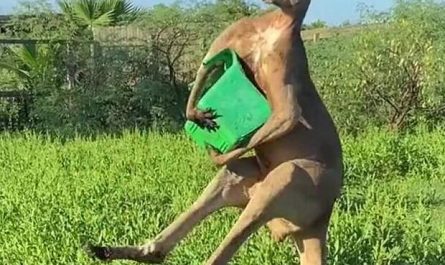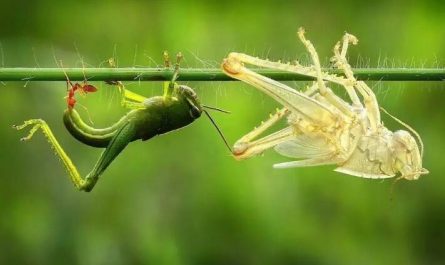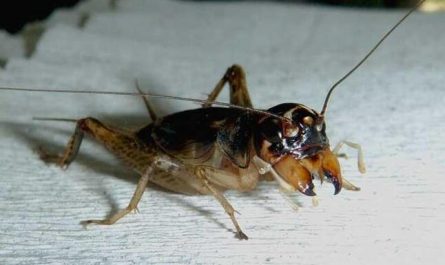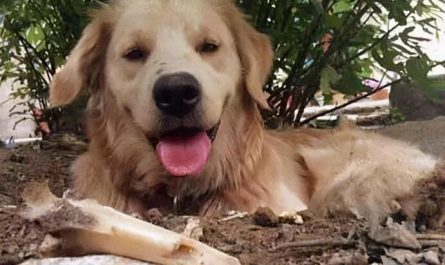Reasons for some insects to peel
Molting of insects is necessary for growth, because the epidermis (exoskeleton) of insects is composed of waxy layer and chitin layer. The waxy layer is located on the outermost layer of the surface and prevents the evaporation of water.
Chitin is a complex nitrogen-containing polysaccharide, which is the main component of exoskeleton. Under the chitin layer are epidermal cells that secrete exoskeleton. Once the exoskeleton secreted by epidermal cells has hardened, it cannot continue to expand, which restricts insect growth.
Therefore, insects will molt during their growth and development. When molting, the epidermal cells secrete an enzyme to dissolve the chitin, and at the same time the waxy layer is broken, the larvae of insects can burrow out of the exoskeleton, and the epidermal cells can secrete the exoskeleton again.
Before the new exoskeleton has completely hardened, the insect body can grow. The hardening of the exoskeleton is due to the denaturation of protein. Therefore, insect larvae that are developing and growing rapidly shed their skins more often. When the insect grows to the point where it no longer grows, moulting stops. After the completely metamorphic insects shed their skin for the last time, the secretion of ecdysone is normal, and the secretion of juvenile hormone is reduced, and enter the pupal stage.
An insect hatches from an egg into a larva. During the larval stage, it has to shed its skin several times. Each time it sheds its skin, it increases by one instar, just like a higher animal grows up to one year old. The worm that has just hatched from the egg is called the first instar, the first peeled off is called the second instar, and the second peeled off is called the third instar. Push it down like this and add one to the number of larvae peeling off. The instar of the larva.
Why do insects shed their skin? Because insects do not have the skeletal system of higher animals, they rely on the outer shell to play the role of skin and bones. This body shell is also called an exoskeleton or body wall. Although the body wall ensures that the insect is more beneficial to adapt to various natural environments, the thickness of each part of the insect body is different. Some thick and hard parts are ossified and lack elasticity. When the larva reaches a certain stage, the insect The growth of the body is restricted, and it must take off the old skin and replace it with new skin to continue its growth.
Insect peeling is an essential part of its life. Every time insect larvae shed their skin, they not only enlarge their bodies, but also further develop their internal organs. At the same time, their external morphology also changes. In addition, because the skin of insects is formed by the products of metabolism, peeling also has the effect of excretion. The growth and morphological changes of insect larvae show certain regularity due to peeling. For example, the white butterfly that damages vegetables peels!
The process of insects changing their coats is controlled by the endocrine organs in the body. When the insect grows to a certain level, it secretes a skin hormone, which separates the insect’s old epidermis from the dermal cells, and gradually forms a thin new epidermis. Finally, the insect contracts the abdominal muscles to increase the blood pressure in the chest and make the back upward. Arched, so the old skin came out along the particularly fragile part of the back of the chest. For example, when a cicada is peeling, it splits from the “””-shaped place in the center of the back, squirming from the outer skin, head and tail, slowly crawling out. Insects living in water use them to absorb air or water to make the body The swelling is also cracked in the particularly fragile part of the old skin, and then the soft insect body will be released by the force of peristalsis.
Introduction to Insects
There are many kinds of insects with different shapes. They belong to the arthropods among invertebrates. They are the most numerous animal group on earth. They account for more than 50% of all biological species (including bacteria, fungi, and viruses). They are almost everywhere. Every corner of the world.
Until the beginning of the 21st century, there were more than 1 million species of insects known to mankind, but there are still many species yet to be discovered. Insects have the largest variety and number in the animal kingdom, and they have a major impact on agricultural production and human health. The most common are locusts, butterflies, bees, dragonflies, flies, grasshoppers, and cockroaches. Not only are there many types of insects, but the number of individuals of the same species is also amazing. The distribution of insects is so wide that no other class of animals can compare with it, almost all over the earth. There are different types. Most insects can be used as specimens and are good biological resources that humans can use.
